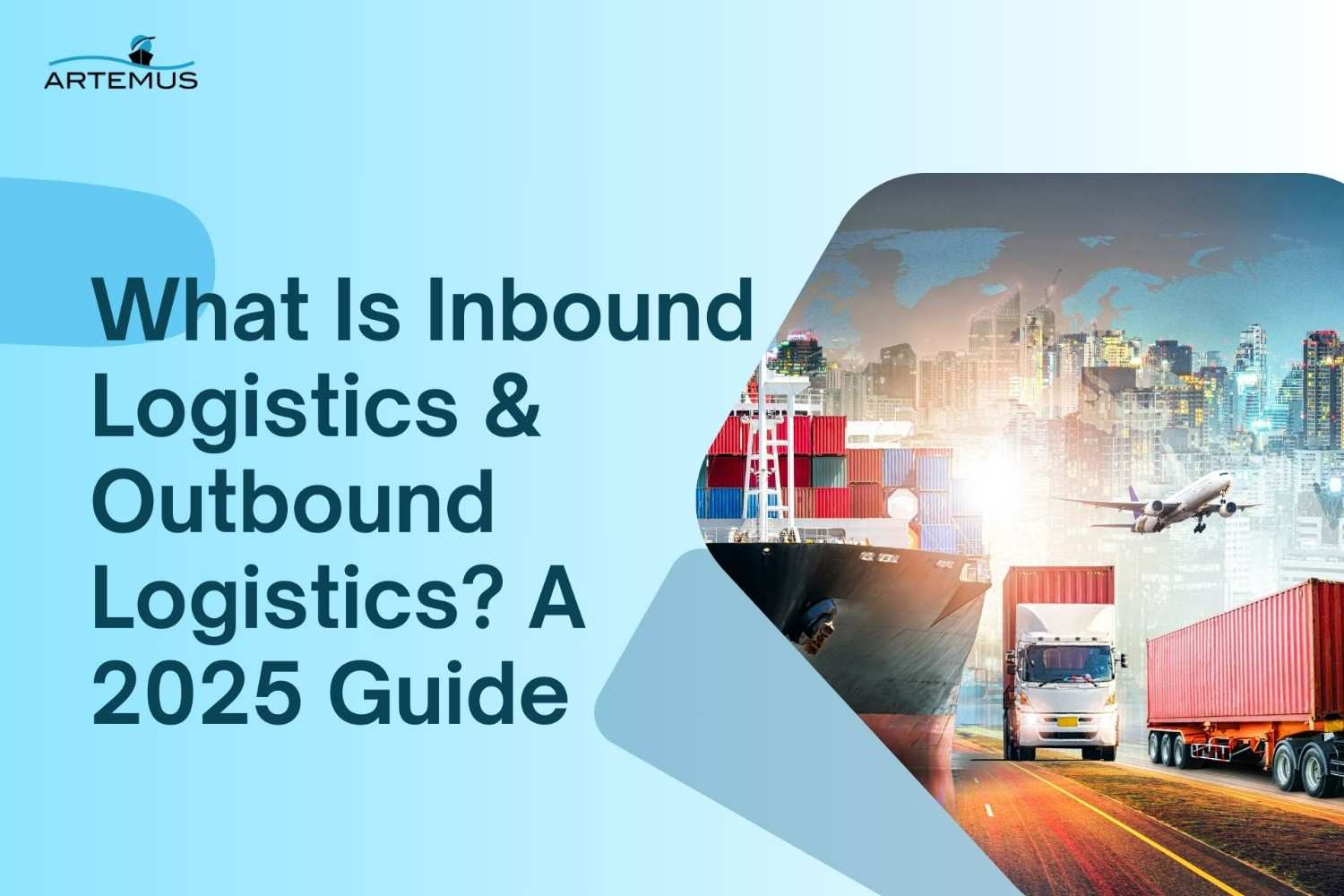
What Is Inbound Logistics & Outbound Logistics? A 2025 Guide
In the dynamic world of supply chain management, understanding the nuances of inbound and outbound logistics is crucial for operational
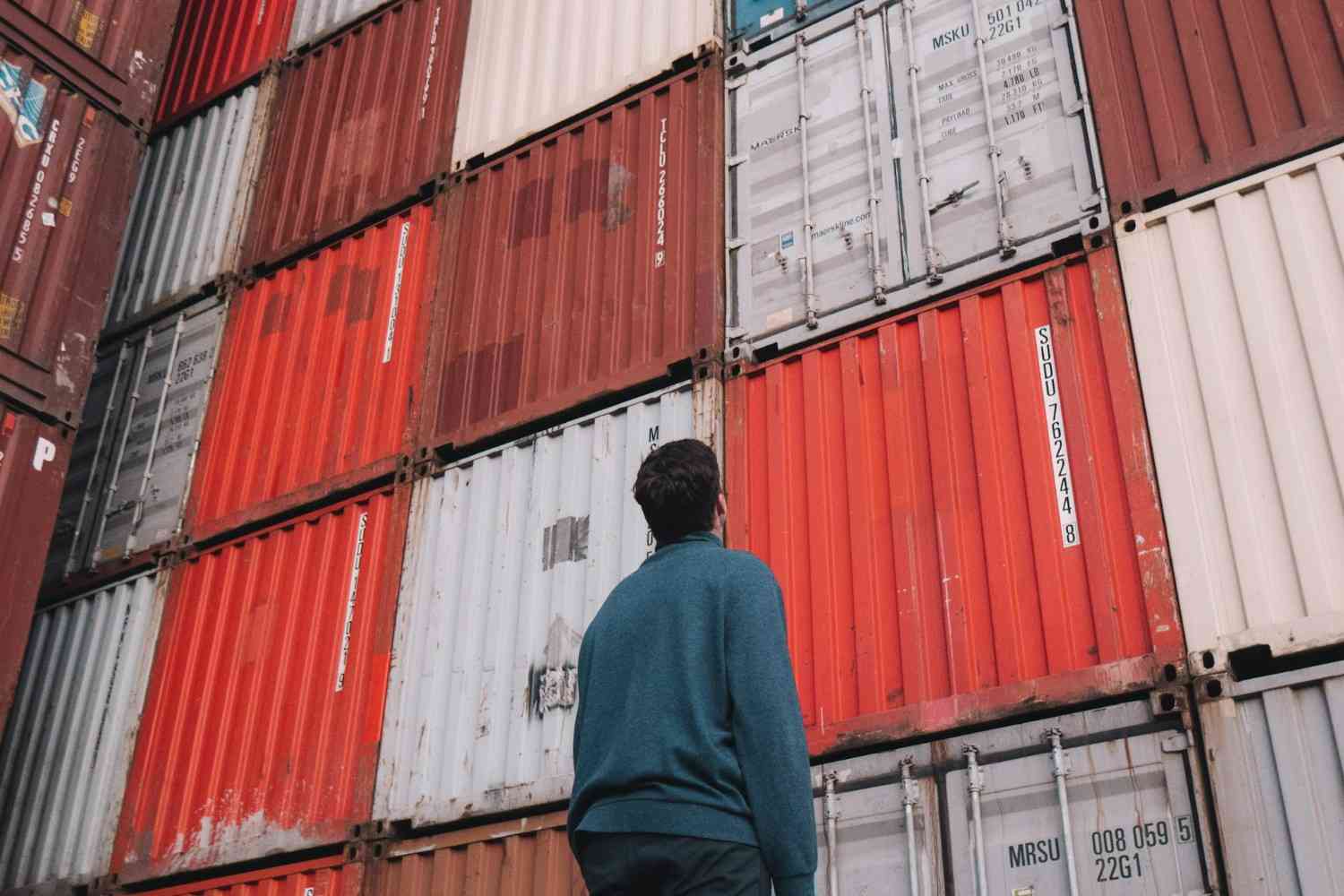
Whether you’re a seasoned importer or delving into international trade for the first time, understanding the ins and outs of customs clearance is essential for a successful and compliant import operation.
Every year, billions of dollars worth of goods cross U.S. borders, each shipment requiring meticulous attention to detail to ensure smooth clearance through customs. From submitting the right paperwork to paying duties and taxes, the customs clearance process can be complex and daunting. However, armed with the right knowledge and resources, importers can navigate this process with confidence.
At Artemus Transportation Solutions, we understand the challenges importers face when it comes to customs compliance. Our software solutions cover essential aspects of customs compliance, including Importer Security Filing (ISF), Automated Manifest System (AMS), and support for Customs Brokers. With our cutting-edge technology, importers can streamline their customs clearance process and ensure compliance with U.S. customs regulations.
Table Of Contents
Customs clearance is a critical process that ensures the legal entry of goods into a country and compliance with its customs regulations. It involves a series of procedures and documentation that must be completed before imported goods can be released from customs control and enter the domestic market.
At its core, customs clearance involves the verification of import documentation, assessment of duties and taxes, and inspection of goods to ensure compliance with import regulations and standards set by the country’s customs authority. In the United States, this authority is primarily managed by the U.S. Customs and Border Protection (CBP).
Related: How Long Does Customs Clearance Take? Key Takeaways
Customs clearance is necessary for several reasons, all of which are vital for maintaining the integrity of a country’s borders, protecting domestic industries, ensuring public safety, and facilitating international trade. Here are some key reasons why customs clearance is necessary:
1. Regulatory Compliance: Customs clearance ensures that imported goods comply with the laws and regulations of the importing country. Each country has its own set of customs regulations governing the importation of goods, including requirements related to tariffs, quotas, labeling, safety standards, and prohibited items. By undergoing customs clearance, importers demonstrate their compliance with these regulations, helping to prevent illegal or unauthorized imports.
2. Revenue Collection: Customs clearance plays a crucial role in revenue collection for governments. Import duties, taxes, and fees collected during the customs clearance process contribute significantly to a country’s revenue stream. These funds support various government functions, including infrastructure development, public services, and social programs. Proper customs clearance ensures that importers pay the appropriate duties and taxes based on the value and classification of imported goods.
3. Trade Facilitation: Customs clearance facilitates the smooth flow of international trade by providing a framework for the lawful movement of goods across borders. By ensuring compliance with customs regulations, importers can expedite the clearance process, minimize delays, and avoid penalties or fines. Efficient customs clearance processes enhance predictability and transparency in international trade, fostering economic growth and development.
4. Protection Of Domestic Industries: Customs clearance helps protect domestic industries from unfair competition and safeguard national interests. Import regulations, including tariffs, quotas, and trade remedies, are designed to protect domestic producers from cheap or subsidized imports that could undermine their competitiveness. Customs authorities may impose measures such as anti-dumping duties, countervailing duties, or safeguard measures to address unfair trade practices and protect domestic industries from harm.
5. Public Safety & Security: Customs clearance plays a crucial role in ensuring public safety and security by preventing the entry of dangerous or hazardous goods, illicit substances, counterfeit products, and other threats. Customs authorities conduct inspections and screenings to detect and intercept prohibited items, including narcotics, weapons, and contraband. By enforcing strict import controls, customs clearance helps safeguard the health and well-being of citizens and protects national security interests.
6. Compliance With International Agreements: Customs clearance ensures compliance with international agreements and commitments, including trade agreements, customs conventions, and treaties. Many countries are party to bilateral or multilateral trade agreements that govern the terms and conditions of trade between participating countries. Customs clearance helps ensure that imports and exports comply with the provisions of these agreements, promoting cooperation, harmonization, and mutual recognition of standards and procedures.
Related: Shipment Has Been Given A Release Status By Customs
The United States Customs and Border Protection (CBP) is the nation’s largest federal law enforcement agency, responsible for safeguarding America’s borders and facilitating lawful trade and travel. As part of the Department of Homeland Security (DHS), CBP plays a critical role in protecting the United States from various threats, including terrorism, illegal immigration, smuggling, and the entry of illicit goods.
CBP operates at air, land, and sea ports of entry across the country, enforcing immigration laws, conducting customs inspections, and intercepting contraband. CBP’s mission encompasses a wide range of responsibilities, including border security, customs enforcement, immigration control, and trade facilitation. The agency employs a multi-layered approach to border security, leveraging advanced technology, intelligence analysis, and partnerships with other federal, state, and local agencies to detect and deter threats to national security.
CBP officers and agents are stationed at ports of entry and along the border to inspect travelers, cargo, and vehicles, ensuring compliance with immigration and customs laws while expediting the flow of legitimate trade and travel.
Related: Customs Compliance Software: Key Benefits & Top Suggestions
Preparing for customs clearance is a crucial step in ensuring a smooth and efficient import process. Adequate preparation helps importers navigate the complexities of customs regulations, minimize delays, and avoid penalties or fines. Here are some essential steps to prepare for customs clearance:
Before importing goods, it’s essential to understand the duties, taxes, and fees that may apply. Different products may be subject to varying rates of duty based on factors such as their value, country of origin, and classification. By researching and calculating the expected duties and taxes, importers can anticipate costs and budget accordingly.
Proper classification of goods is critical for customs clearance. Each product is assigned a Harmonized System (HS) code, which categorizes it based on its nature, composition, and intended use. Accurate classification helps customs officials determine the applicable duties, taxes, and regulatory requirements. Importers can use resources such as the Harmonized Tariff Schedule (HTS) or seek assistance from customs brokers to correctly classify their goods.
Importers must prepare and submit various documents to facilitate customs clearance. These may include the commercial invoice, bill of lading, packing list, certificates of origin, and any permits or licenses required for specific goods. Ensuring that all documentation is complete, accurate, and organized helps expedite the clearance process and reduces the risk of delays or discrepancies.
Import regulations can vary depending on the type of goods being imported and the country of origin. It’s crucial to familiarize yourself with the import regulations and requirements of the destination country, including any restrictions, prohibitions, or special permits that may apply. Compliance with import regulations helps prevent issues during customs clearance and ensures the lawful entry of goods into the country.
Leveraging technology solutions can streamline the customs clearance process and improve efficiency. Many customs brokers and freight forwarders offer electronic filing systems that allow importers to submit documentation electronically, track shipments in real time, and receive notifications about the status of customs clearance. Automated systems help reduce paperwork, minimize errors, and accelerate the clearance process.
Related: ISF Filing: A Compliance-Related Guide & Software Solution

Navigating the customs clearance process in the USA for goods requires careful attention to detail and adherence to regulatory requirements. Here’s an overview of the steps involved in customs clearance:
The process begins with the preparation of necessary documentation. Importers must gather essential paperwork, including the commercial invoice, bill of lading, packing list, and any certificates or permits required for specific goods. Ensuring that all documentation is complete, accurate, and organized is crucial for a smooth clearance process.
Importers or their appointed customs brokers must submit entry documents to the U.S. Customs and Border Protection (CBP) via the Automated Commercial Environment (ACE) system. Entry documents provide details about the imported goods, such as their description, value, quantity, and country of origin. CBP reviews the entry documents to verify compliance with import regulations and assess duties, taxes, and fees.
CBP assesses duties, taxes, and fees based on the value, classification, and origin of the imported goods. Importers are responsible for paying any applicable duties, taxes, and fees before the goods can be released from customs control. Payments can be made electronically through the ACE system or by other approved methods.
In some cases, CBP may conduct a physical inspection or examination of the imported goods to verify their contents, ensure compliance with safety and security standards, and detect any prohibited or restricted items. Importers must cooperate with CBP officials during the inspection process and provide access to the goods as required.
Upon completion of the clearance process, CBP releases the goods for entry into the United States. Importers receive a customs release notification indicating that the goods have been cleared for release. Importers or their designated agents can then arrange for the retrieval or delivery of the goods from the port of entry.
Importers are required to maintain accurate records of import transactions and supporting documentation for a specified period, typically five years from the date of importation. Proper record-keeping helps demonstrate compliance with customs regulations and facilitates audits or inquiries by CBP.
Importers must remain vigilant about post-clearance compliance obligations, including any ongoing reporting requirements, duty drawback claims, or regulatory updates. Staying informed about changes in customs regulations and industry best practices helps ensure continued compliance and smooth import operations.
Related:What Is HTS Code (Harmonized Tariff Schedule)? A Quick Guide
Post-clearance procedures in the USA are critical for maintaining compliance with customs regulations and ensuring the integrity of import transactions. After goods have been cleared by the U.S. Customs and Border Protection (CBP) and released for entry into the country, importers must fulfill certain obligations and responsibilities. Here’s an overview of post-clearance procedures in the USA:
Related: How To Check ISF Filing Status? A Step-By-Step Guide
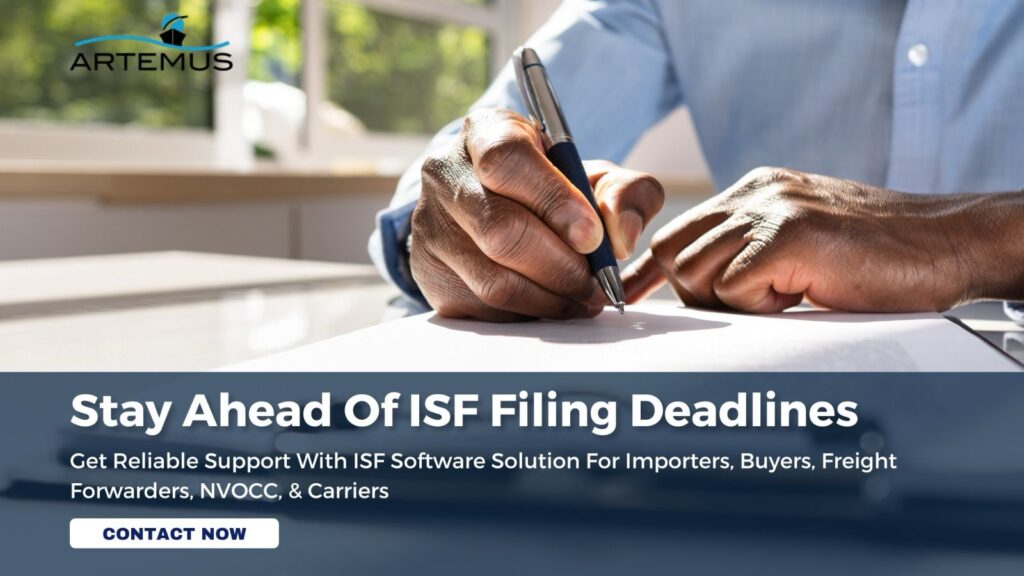
Artemus offers the best ISF software for customs compliance, providing importers with a comprehensive solution to streamline Importer Security Filing (ISF) processes. With Artemus ISF software, importers can easily submit accurate and timely ISF filings, ensuring compliance with U.S. Customs and Border Protection (CBP) regulations. The user-friendly interface and robust features of Artemus software empower importers to efficiently manage ISF requirements, reduce errors, and avoid costly penalties. Trusted by importers and logistics professionals, Artemus is the go-to choice for simplifying ISF compliance and enhancing supply chain efficiency.
To clear customs in the USA, submit required documentation to U.S. Customs and Border Protection (CBP) via the Automated Commercial Environment (ACE) system, pay applicable duties and taxes, and comply with post-clearance procedures for record-keeping and any necessary modifications or claims.
Customs clearance fees in the USA vary depending on factors such as the value and type of goods being imported, the complexity of the clearance process, and whether a customs broker is used. Fees typically range from $50 to several hundred dollars per shipment.
The customs process in the USA involves submitting entry documents, paying applicable duties and taxes, potential inspection of goods, and receiving clearance from U.S. Customs and Border Protection (CBP) for lawful entry into the country.
The procedure of customs clearance involves submitting required documentation, such as the commercial invoice and bill of lading, to the customs authority, paying any applicable duties and taxes, and undergoing inspection or examination of goods before they are released for entry into the country.
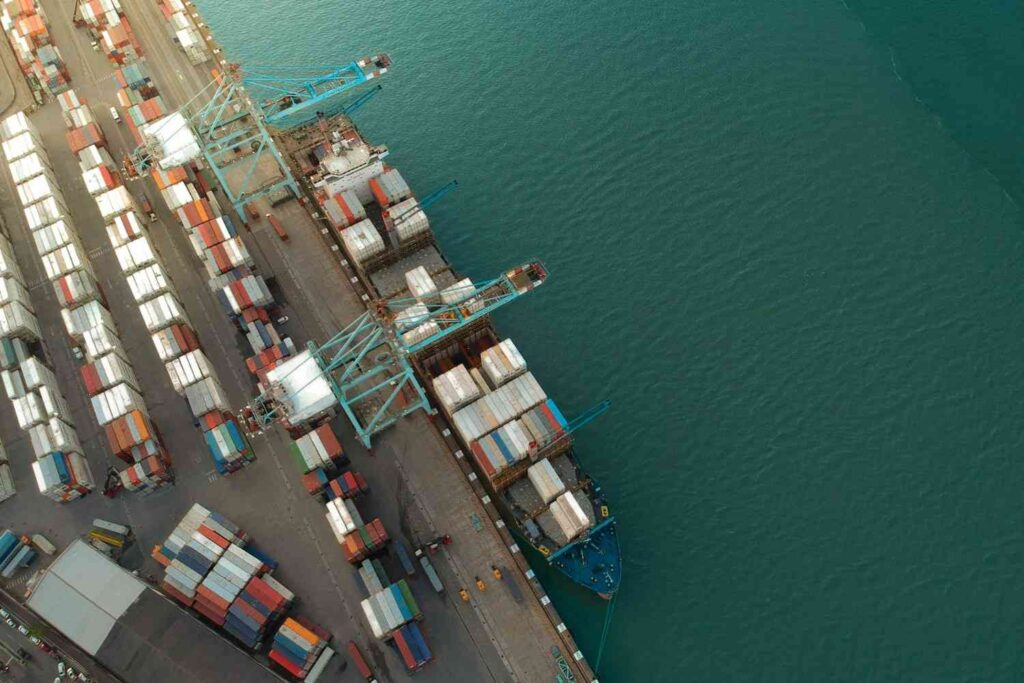
Navigating the customs clearance process in the USA for goods requires careful planning, attention to detail, and compliance with regulatory requirements. Throughout this guide, we’ve explored the essential steps involved in customs clearance, from preparing documentation to post-clearance procedures.
By understanding the customs clearance process and leveraging resources such as compliance software from Artemus Transportation Solutions, importers can streamline their operations, minimize delays, and ensure compliance with U.S. customs regulations. Whether you’re importing goods for commercial purposes or personal use, having a solid grasp of customs clearance procedures is essential for a successful import operation.

In the dynamic world of supply chain management, understanding the nuances of inbound and outbound logistics is crucial for operational

In today’s interconnected world, businesses rely heavily on global trade to expand their markets, access new resources, and drive growth.
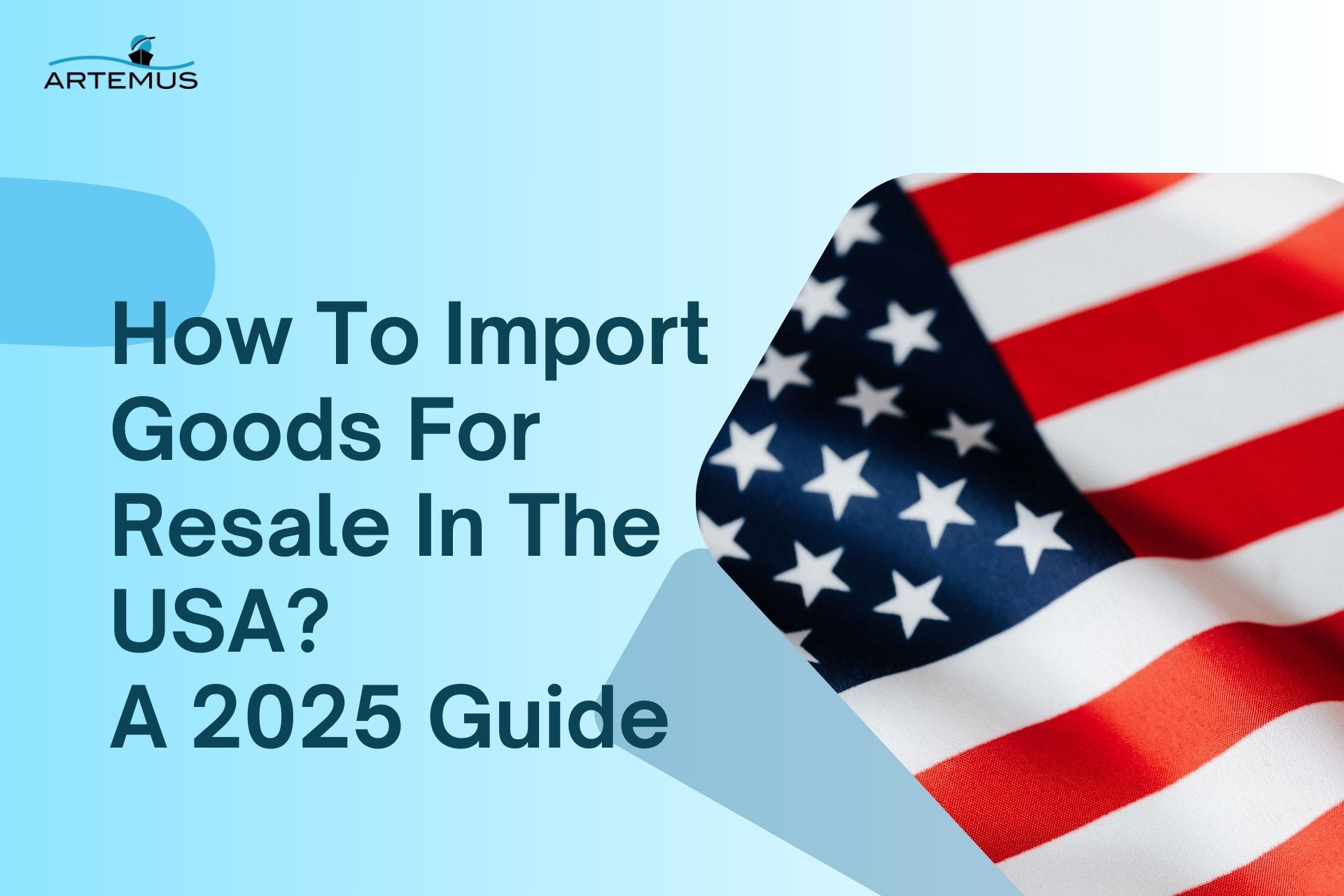
Importing goods for resale in the USA presents a lucrative business opportunity, but navigating the complexities of U.S. customs regulations,
Get In Touch
Artemus’ Software Solutions for ISF, AMS, Japan AFR, eManifest Canada, & Panama B2B filings.